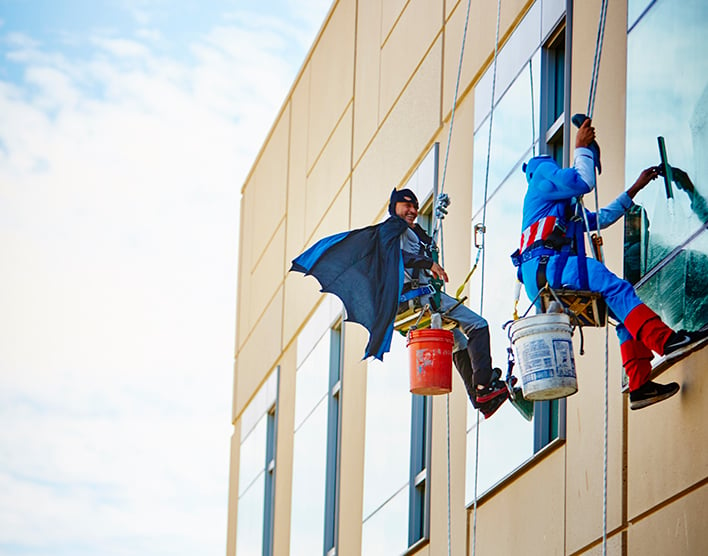Staff superheroes
It’s a bird. It’s a plane. It’s a window washer! Dressed as a superhero to clean and brighten your day.


A kidney stone is a piece of solid material that forms in the kidney when minerals in the urine become very concentrated. Small stones often pass through the body with little discomfort, but larger stones can be very painful and even block the urinary tract. Kidney stones are more common in adults, but they can also occur in children of any age. Many physicians report seeing more children with the condition in recent years it is possibly because of lifestyle and dietary factors.
Stones can form if a child has a defect in the urinary tract that keeps urine from flowing properly. Up to a third of children with stones have an anatomic abnormality of some kind. Genetic factors can also predispose a child to form kidney stones. Sometimes diet plays a role. Drinking too little water can encourage stone formation, and too much salt can also be a problem. If a child has a urinary tract infection, bacteria may cause stones to form. Some metabolic disorders also can increase the likelihood that a child will have kidney stones.
Children with kidney stones may have pain when urinating, have blood in their urine, or have pain in their back or lower abdomen. Sometimes the pain causes nausea and vomiting. Small stones can pass through the urinary tract without causing any symptoms at all.
A combination of urine, blood, and imaging tests can be used to determine whether a child has a kidney stone. Urine tests can detect infections or elevated levels of substances that form stones. Blood tests can help diagnosis biochemical problems that can lead to kidney stones. Imaging techniques that may be used to locate the stone include ultrasound, in which sound waves are used to image organs and their structures, computerized tomography (CT), which combines X-rays with computer technology to create three dimensional images of the urinary tract, and standard X-rays.
Treatment depends on the size of the stones and a child’s symptoms. Small stones usually pass through the urinary tract on their own, and children may only need to drink extra fluids and take pain medications to help the stone pass. If the stone is large or is blocking the flow of urine, the child may require more treatment. Your physician may recommend shock wave lithotripsy, in which a machine delivers shock waves that pass through the body and break up the stone into small particles that can be excreted in the urine. Sometimes the stone can be removed through a flexible device called an uteroscope that is passed through the urethra into the urinary tract. If the stone is in the kidney, an urologist may perform percutanous nephrolithotomy, in which a small viewing instrument is inserted into the kidney through an incision in the child’s back and the stone is removed. These procedures are performed with general anesthesia.
Children should drink plenty of fluids to keep the urine diluted and to flush away substances that may form stones. Children generally recover quickly from an episode of kidney stones, but to prevent a recurrence, physicians will try to understand why a stone formed. Urine may be collected over a 24-hour period to look for any underlying mineral abnormalities. If the stone has been retrieved, your doctor will analyze its chemical make-up. When an underlying cause can be identified, or if a child has repeated episodes of kidney stones, medications and dietary changes may be recommend to prevent more stones from forming.
UCSF Benioff Children's Hospitals medical specialists have reviewed this information. It is for educational purposes only and is not intended to replace the advice of your child's doctor or other health care provider. We encourage you to discuss any questions or concerns you may have with your child's provider.

Best in Northern California for urology

Ranked among the nation's best in 11 specialties
Staff superheroes
